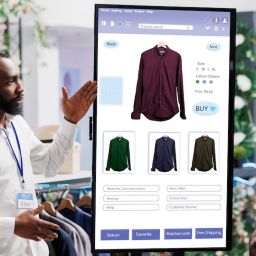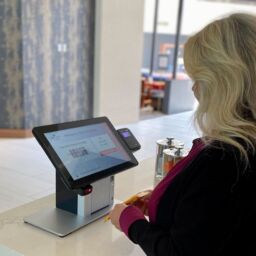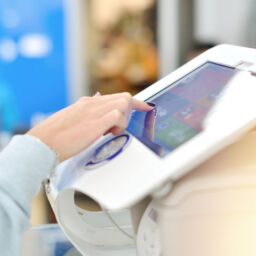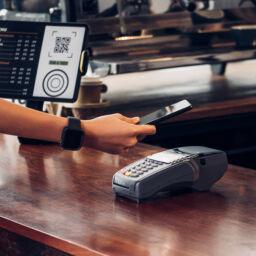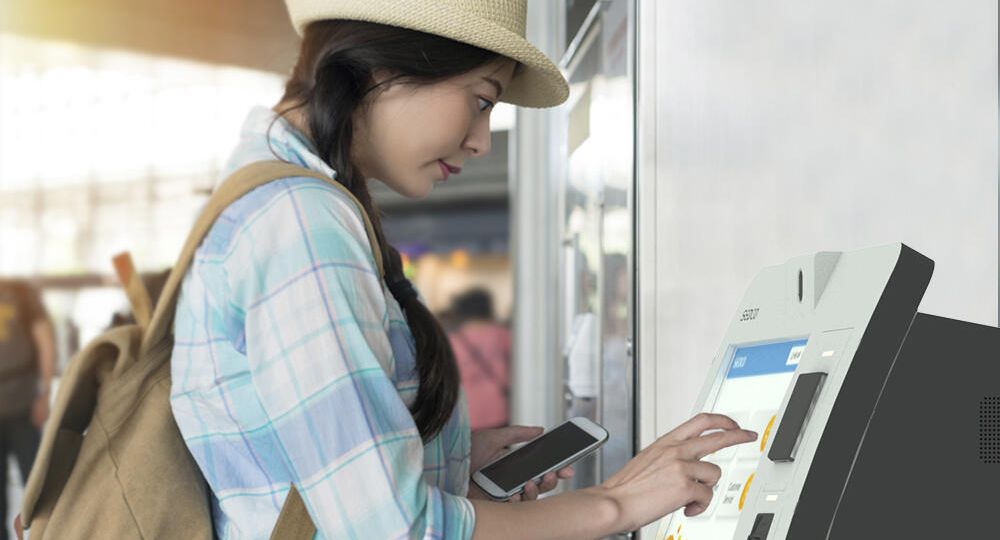

Amman Regional Office
SEDCO
The future of banks is a hot topic. As the world progresses towards a digital transformation era, both mobile banking and ATM machines have become the normal for most people.
With the current pandemic, banks are now facing a new challenge of providing an all-encompassing experience to their customers while maintaining social distancing.
Alternative channels such as self-service machines have encouraged banks to reimagine traditional banking and explore alternatives that blend physical and digital experiences to provide all types of banking services 24/7.
These experiences involve enabling customers to pre-stage a banking service on their phone, finish it through a self-service kiosk or carry out day-to-day transactions inside the branch.
What types of banking services can the machines provide?
Contactless alternatives of banking services instead of customers’ services counters
Almost all non-cash transactions can be done through the self-service kiosks which offer unattended banking services through 24/7 digital branch. Customers who are vulnerable, essential shift workers, and those who wish to avoid the crowds can complete their banking transactions outside of usual business hours with access to the following services:
Onboarding experience
Onboarding of new customers without exposing employees to any health risks
Customers can open new accounts safely and conveniently using the self-service kiosks which can either be installed in a smart digital bank branch or in public areas like malls. The kiosk validates the identities of customers through biometric identification or scanning their ID cards, and issues a card instantly.
Renewal of cards
Dispensing different types of banking cards through self-service machines
The process of applying for banking cards can be quite long. It may require customers to visit the bank more than once to apply for and acquire their cards. Self-service kiosks provide a convenient and quick solution that allows customers to obtain ATM and debit cards. The card is dispensed to the customer on the spot, resulting in a faster and much safer customer journey.
Issue cheques or chequebooks
Performing banking transactions whenever the customers need
Waiting can be hectic. If customers are in a rush, they can easily print cheques or chequebooks while customer validation can be done through the machine, such as scanning, printing, and sharing supporting documents or capturing the customers’ photos and signatures.
Cheque deposit
24/7 cashless transactions in a safer mode
Customers can get many non-cash transactions around the clock without the need for direct human interaction. This includes fund transfer, cheque deposit, and many other banking services.
Print account statement
Instant printing of relevant banking documents
There is no need for customers to visit the branches and wait in crowded rooms to print relevant documents. With self-service machines, they can easily print account statements and a variety of documents while maintaining a safe distance from other people.

Remote consulting
Remote assistance via video banking
Customers can gain direct assistance from a remote agent whenever they need through interactive video banking machines. This option is particularly helpful as it eliminates the need for face-to-face communication and significantly minimises the health risks associated with in-person interaction.
Bill payment
Other services with minimal human interaction
With self-services kiosks, banks can reduce the number of staff needed to serve walk-in customers for many services even for bill payment transaction. The kiosks accept cash, coins and credit cards.
How self-service kiosks make a difference
With self-service machines, banks can evolve to smart digital branches while optimising resource utilisation to serve customers beyond the working hours at reduced costs.
All self-service kiosks and branches can be centrally managed from the head office, where banks can easily manage and control their machines remotely, and get access to powerful reports and statistics to do the following:
- Compare transaction demand across regions, machines, services, periods and segments.
- Analyse customer traffic distribution in each machine.
- Measure customer satisfaction level against the organisation’s goals.
- Analyse customer trends for a specific period of time.
- Generate revenue analysis report.

Why banks should invest in self-service kiosks during and after the pandemic
Social distancing is likely here to stay (at least for the next 18 months) as we find a new, safer normal. That said, even when you take away physical distancing, banks still gain substantial benefits from their kiosks, including:
- Customer empowerment – Ability to choose whether to be served through service counter, self-service kiosk or via video calls through the machines.
- 24/7 self-service corner – Customers can access nearly all banking services on-demand, during weekends and holidays.
- Cost-effective channel – Banks can reduce cost per transaction by reducing employee and overhead cost.
- Better customer experience – Minimal queue length and wait times and more convenience, privacy, and safer customer journey.
- Increased revenue – By promoting relevant services at the right time, tailored to each customer profile and interests.
- Resource efficiency – Banks can deploy and relocate machines, and minimise the number of branch staff needed to serve customers.
Transform into smart digital banking branches with self-service kiosks
Ease of transaction, safer customer journey, zero waiting time, better experience, and quick service are just a handful of the benefits that you can expect from the self-service machines.
A cost-effective service alternative that complies with social distancing, while ensuring availability of banking services 24/7.
The machines provide immense business value to banks while keeping both staff and customers protected during these uncertain times.



